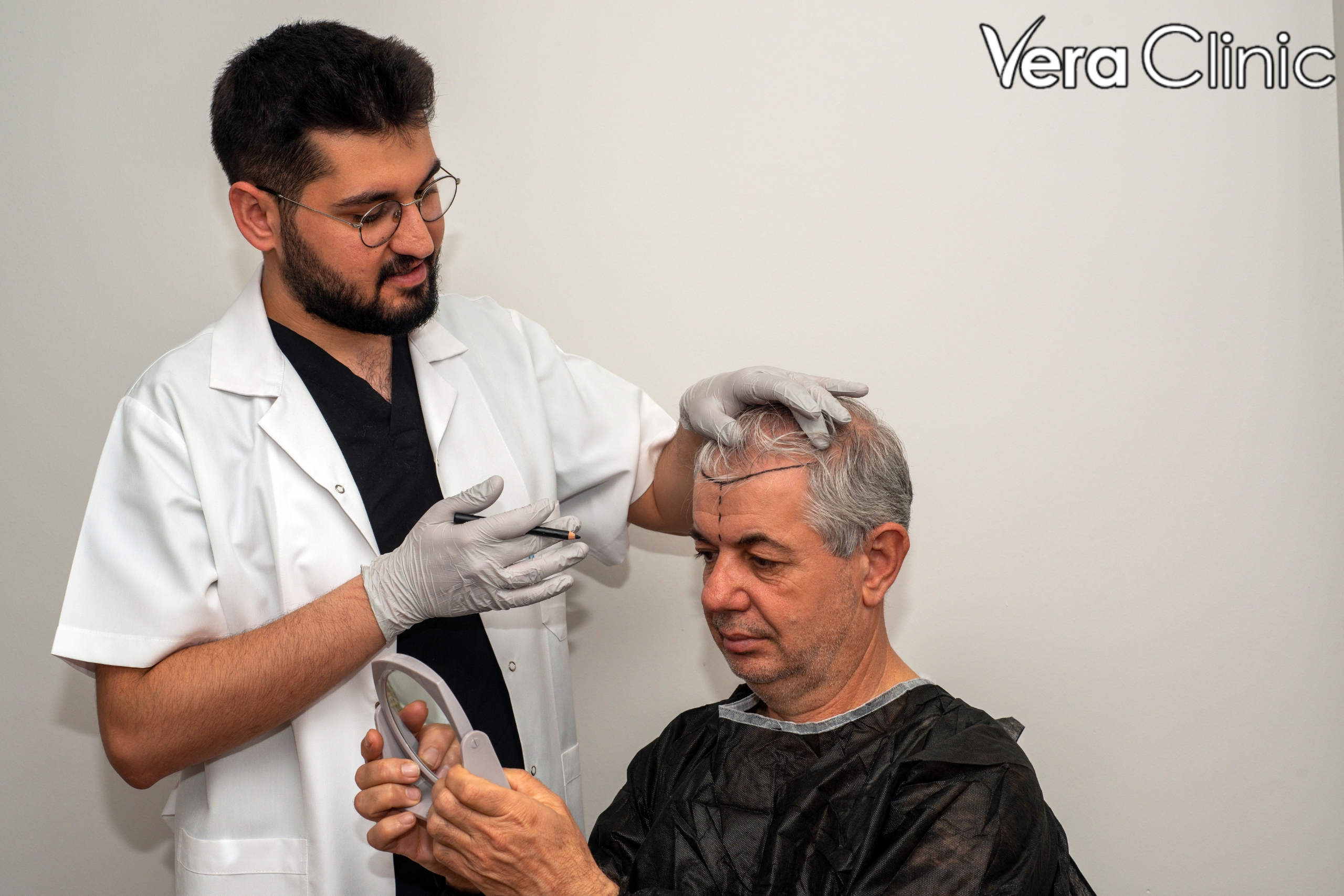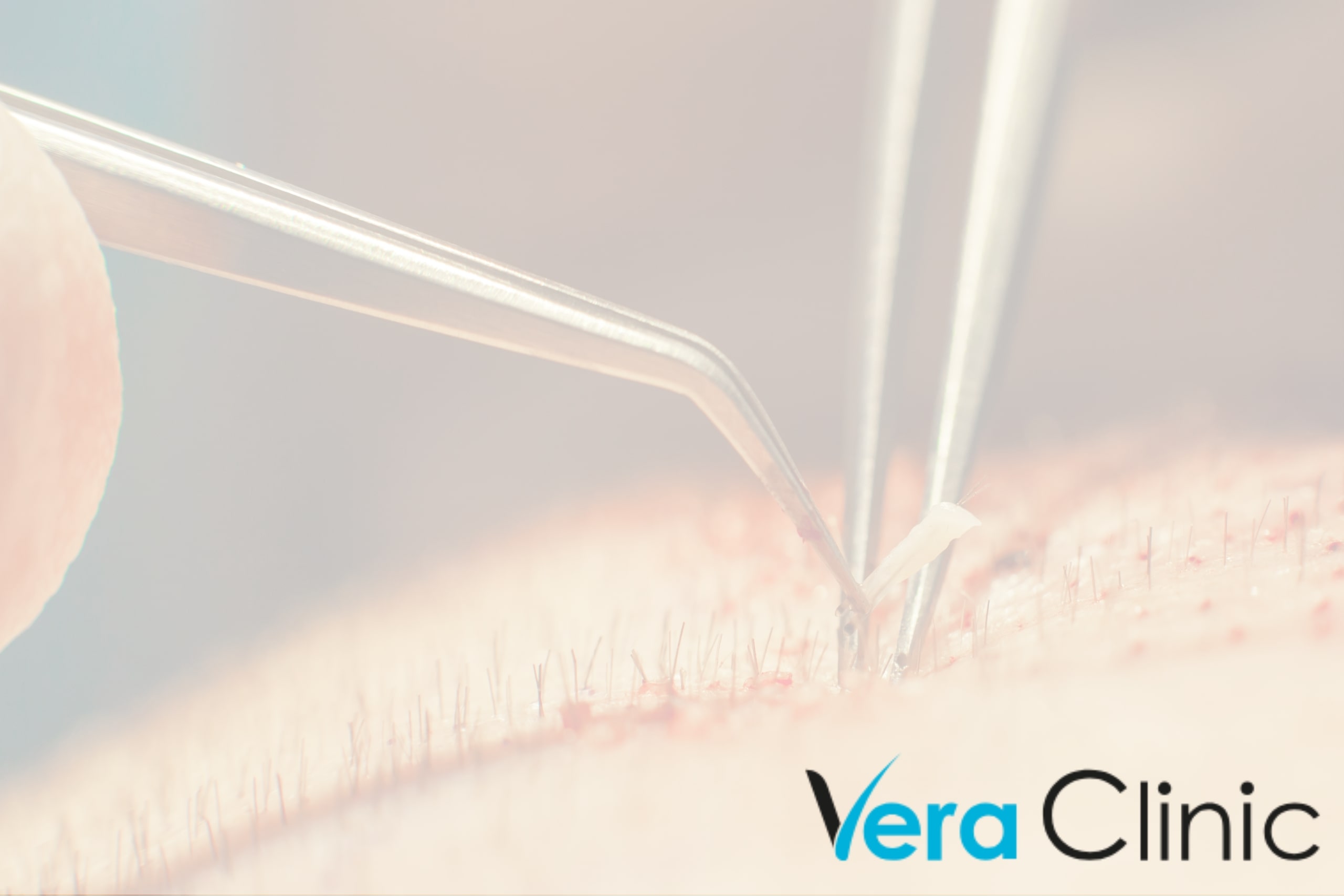A lot of people worry about losing their hair, which makes them look for answers like hair transplants. But what is a hair graft, and how can it help fix your hairline? People who are thinking about this process need to know the basics in order to make an informed choice.
In places like Turkey, hair grafting has become a popular way for people who are losing their hair to fix their problem. Hair cells are moved from one part of the head to another during this process to help new hair grow. Thanks to improvements in technology and methods, hair grafting is now a choice for many people who want to feel confident and look younger again.
Understanding Hair Grafts
A hair graft is a strip or group of hair cells that are used in hair transplants to grow hair back in places where it has been lost or is becoming thin. Most of the time, these grafts are taken from the back or sides of the head, where hair is thicker.
To use hair cuttings in hair transplants, you need to follow a few important steps. First, the surgeon will carefully take out the hair grafts, making sure that the hair shafts are not damaged too much. Most of the time, this is done by either cutting a strip of skin into smaller pieces (this is called follicular unit grafting) or taking out each follicular unit one at a time (this is called follicular unit extraction).
When the hair grafts are ready, they are carefully placed in the area where they will be used. To do this, small cuts or recipient sites are made in the target area, and the grafts are then put in these sites. To make sure the results look realistic, the surgeon pays close attention to the direction, angle, and quantity of the grafted hair.
Over time, the hair grafts that were transferred will lose their hair shafts and go into a phase of rest. New hair will grow slowly from the transferred follicles, though, making the treatment area more densely and completely covered in hair. It is important to remember that hair patches are usually lasting because they don’t react to the hormone that makes hair loss happen.
Types of Hair Grafts Turkey
Turkey is known for having very modern and good hair replacement methods. During hair transplantation, various hair donors are utilized, including Follicular Unit Transplantation (FUT), Follicular Unit Extraction (FUE), and Direct Hair Implantation (DHI).
For Follicular Unit Transplantation (FUT), a piece of skin is taken from the donor area, which is usually the back of the head. This skin is then cut into individual hair follicles using a microscope. Then, these hair cells, also known as grafts, are moved to a place where hair loss has happened. A lot of people use FUT because it works really well and leaves fewer scars.
Another popular hair grafting method is Follicular Unit Extraction (FUE), which is liked because it is not too invasive. FUE is different from FUT in that it uses a special punch tool to remove individual hair follicles straight from the donor area. Then, each hair graft is moved to the area that needs it, making a head of hair that looks realistic and full.
Direct Hair Implantation (DHI) is a new method of hair transplanting that blends the best parts of FUE and FUT. In DHI, hair grafts are taken out one at a time using a microscope, which is similar to FUE. DHI, on the other hand, uses a special pen-like tool to remove and transplant each hair cell at the same time, instead of making cuts first and then putting in the grafts. This speeds up the process and increases the chance that the graft will survive.
The Process of Hair Grafting
Hair grafting, which is also called hair transplanting, is a surgery in which hair cells are taken from one part of the body (usually the back or sides of the head) and moved to parts of the scalp where hair is thinnifying or falling out. This treatment is meant to help hair grow back in places where it has been lost due to alopecia.
Before hair grafts can happen, the patient must meet with a skilled surgeon. The surgeon will evaluate the patient’s hair loss and choose a good subject area for hair extraction. Local anesthesia is used to make sure the process is painless once the source area has been found.
The surgeon carefully takes hair follicles from the source spot using a method called strip cutting or follicular unit extraction (FUE). After the follicles are taken, they are carefully cut into grafts, each with one to four hair follicles.
After the hair is taken out, small cuts are made in the target area, which is the part of the head that is bald or getting thinner. The surgeon then carefully inserts the hair grafts into these cuts, making sure that the forehead looks normal and that the angles are correct.
Depending on how many grafts are needed, the process can last for several hours. During the mending process, patients may feel some mild pain, but this can be controlled with painkillers and good care.
Over time, the grafted hair grafts go through a sleeping phase. After three to six months, you should be able to see effects. After transplanting hair cells, they will grow normally like the rest of the hair on your head. However, full hair growth can take up to a year.
Hair grafting is a good way for people who want to stop hair loss and get more hair to stop it. With improvements in technology and methods, this process now provides a long-lasting way to restore hair that looks natural.
Choosing the Right Hair Graft Technique
If you want to get the best results from hair transplanting, you must choose the right hair graft method. Most of the time, Follicular Unit Transplantation (FUT), Follicular Unit Extraction (FUE), and Direct Hair Implantation (DHI) are used. It is very important to know what to think about when choosing between these methods.
For FUT, a small strip of hair-bearing skin is cut out of the donor area and put into separate grafts. This method works well for people who need a lot of grafts and can give them a great return. It does, however, leave a straight scar at the donor site, which is not ideal for people who like to keep their hair short.
With FUE, a small punch device is used to take out individual follicular units straight from the source area. The benefit is that it leaves few scars, since the extraction sites heal with small scars that look like dots. FUE works best for people who want to keep their hair short and don’t need a lot of grafts. The individual extraction method, on the other hand, can make it take a long time.
A special tool called a Choi pen is used to directly transplant hair follicles in DHI, which is a modified form of FUE. This method lets you precisely control the direction and angle of each hair shaft with little touching of the grafts. DHI is a great option for people who want to have the most control over the shape and depth of their hairline.
When deciding between these methods, it’s important to think about how many grafts you want, how short you want your hair to be, how little damage you want, and how important it is to have control over your forehead style. It is very important to talk to a skilled hair transplant expert in order to find the best method for your specific wants and goals.
Who Is A Candidate for Hair Grafting?
Hair grafting, which is also called hair transplantation, is a common surgery that helps people who are bald or have lost a lot of hair grow it back. Before thinking about getting hair grafts, it is very important to find out if you are a good fit for the process.
If you want to get a hair graft, the most important thing is to have enough donor hair that can be taken from your head. Most of the time, the donated hair comes from the back or sides of the head, where hair growth is stable and doesn’t fall out easily. How well the grafting process works depends a lot on how much and what kind of donor hair is used.
Another requirement is that the person must be healthy in general. It is important to get a full medical exam to make sure there aren’t any underlying health problems that could slow down the healing process. People who have diabetes that isn’t under control, problems with blood clots, or autoimmune diseases might not be good candidates for hair grafting.
Another important thing to think about is the candidate’s age. Hair grafting works best for people whose hair loss habits don’t change. People in their early twenties shouldn’t usually do it because their hair loss pattern might not settle until later in life.
Overall, the best candidates for hair grafting are those with stable donor areas, good overall health, and realistic expectations regarding the outcome of the procedure. Consulting with a qualified hair transplant specialist is the first step in determining if hair grafting is the right option for hair restoration.
How Long Do Hair Grafts Last?
Hair grafts, also known as hair transplants, have become an increasingly popular solution for individuals experiencing hair loss or thinning. Understanding the longevity of hair grafts is important for those considering this procedure. On average, hair grafts can last a lifetime.
The success and lifespan of hair grafts depend on various factors. Firstly, the method used to extract and implant the hair follicles plays a crucial role. There are two commonly used techniques: follicular unit extraction (FUE) and strip harvesting. FUE involves extracting individual hair follicles, resulting in less scarring and quicker healing time compared to strip harvesting. Consequently, hair grafts obtained through FUE tend to have a longer lifespan.
Additionally, the surgeon’s skill and experience significantly impact the longevity of hair grafts. An experienced and skilled surgeon is likely to harvest and implant the hair follicles more effectively, increasing their overall survival rate. Adequate post-operative care, such as protecting the grafts from sunlight, also plays a vital role in their lifespan.
Furthermore, patient characteristics and lifestyle factors can influence the longevity of hair grafts. For instance, individuals with a stable donor area, where the hair follicles are taken from, tend to experience better outcomes. On the other hand, patients who smoke or have certain medical conditions may have reduced graft survival rates.
How Many Hairs Does 1 Graft Have?
A hair graft is a unit of hair transplantation that is commonly used in hair restoration procedures. It is important to understand the number of hairs typically found in a single hair graft in order to achieve desired results.
On average, a hair graft contains about 1 to 4 hairs. However, the number of hairs within a graft can vary depending on the patient’s hair characteristics and the specific technique used by the surgeon. In some cases, a graft can even have up to 5 or 6 hairs.
The quantity of hairs in a graft is crucial because it determines the density and natural appearance of the transplanted hair. Surgeons carefully select and place grafts with the appropriate number of hairs to mimic the patient’s natural hair growth pattern.
During the hair transplant procedure, grafts are taken from the donor area, usually the back or sides of the head, where hair growth is typically dense. The surgeon then meticulously places these grafts into the recipient area, where hair loss or thinning has occurred.
Understanding the number of hairs in a graft is essential for both the surgeon and the patient. It allows the surgeon to plan the procedure effectively and provide the patient with realistic expectations regarding the final outcome. Additionally, it helps the patient understand the number of grafts required to achieve the desired density and coverage.
How Painful is Hair Grafting?
Hair grafting or hair transplantation is a surgical procedure that involves the removal of hair follicles from one part of the body, usually the back or sides of the head, and the planting of these follicles onto bald or thinning areas of the scalp. One of the common concerns among individuals considering hair grafting is the level of discomfort associated with the procedure.
Fortunately, hair grafting is generally a well-tolerated and minimally painful procedure. Local anesthesia is administered to numb the scalp before the surgery, which significantly reduces any potential pain or discomfort that may be experienced during the procedure. This ensures that the patient remains comfortable throughout the surgical process.
Some patients may report mild discomfort or a sensation of pressure during the administration of the anesthesia or the extraction and transplantation of the hair follicles. However, this is usually well managed with medications and topical anesthetics that are applied to the scalp. The discomfort experienced during hair grafting is typically short-lived and diminishes quickly after the procedure.
It is important to note that individual pain tolerance may vary, and some patients may experience more discomfort than others. However, the majority of patients find hair grafting to be a relatively painless procedure. The benefits of hair grafting in terms of restoring natural hair growth and improving self-confidence often outweigh any temporary discomfort associated with the procedure.
Is Hair Grafting Turkey Expensive?
Hair grafting in Turkey is a popular and cost-effective option for individuals suffering from hair loss. Compared to other countries, undergoing a hair graft procedure in Turkey can be considerably less expensive. The cost considerations for this procedure in Turkey depend on various factors.
Firstly, the extent of hair loss and the number of grafts required will significantly impact the overall cost. Generally, the more grafts that are needed, the higher the cost of the procedure. Hair grafting clinics in Turkey often offer competitive package deals that include accommodation, transportation, and the procedure itself. This can help to reduce costs and make the treatment more accessible to individuals from all walks of life.
In addition, the level of expertise and experience of the hair transplant surgeon will play a role in the cost. Clinics in Turkey are renowned for their experienced surgeons who have performed numerous successful hair graft procedures. Despite the expertise, the cost of hair grafting in Turkey remains more affordable compared to other countries due to lower operating costs and a lower cost of living.
It is important to note that while the cost of undergoing hair grafting in Turkey may be significantly lower than in other countries, it is crucial to prioritize the qualifications and reputation of the clinic and surgeon. Researching and choosing a reputable clinic will ensure a safe and successful procedure.

Conclusion
In conclusion, hair grafting plays a crucial role in hair transplant surgery, particularly in popular destinations such as Turkey. This process involves the careful extraction of healthy hair follicles from donor areas and implanting them into areas experiencing hair loss or thinning. Hair grafting allows surgeons to recreate a natural-looking hairline and restore density to balding areas, ultimately giving patients renewed confidence and improved self-esteem. It is important to choose reputable clinics in hair graft Turkey, where expert surgeons utilize advanced techniques to ensure successful outcomes. With their expertise, patients can achieve long-lasting, natural results that seamlessly blend with their existing hair. Overall, hair grafting serves as a transformative solution for those suffering from hair loss, helping them regain a full head of hair and a sense of normalcy in their lives.




